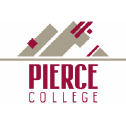What do they do?
Drive ambulance or assist ambulance driver in transporting sick, injured, or convalescent persons. Assist in lifting patients.
Also known as:
Ambulance Attendant, Ambulance Driver, Chair Car Driver, CPR Ambulance Driver (Cardio Pulmonary Resuscitation Ambulance Driver), Driver, Driver Medic, Emergency Care Attendant (ECA), Emergency Vehicle Operator, EMS Driver (Emergency Medical Services Driver), First Responder, Medical Van Driver (Medi-Van Driver)
-
0%
Change
Ranks #22 in job growth rate80Job Openings
Ranks #4 in net job growth
Colleges with the most graduates that become Ambulance Drivers and Attendants, Except Emergency Medical Technicians
Looking for colleges that offer a specific major? Use the College Match Tool to find your best-matched schools and discover your estimated Net Price!
- Some college, no degree (38%)
- High school diploma equivalent (35%)
- Bachelor's degree (13%)
- Associate's degree (8%)
- Master's degree (4%)
- Less than high school diploma (2%)
- Doctorate or Professional Degree (<1%)
People in this career often have these skills:
- Critical Thinking - Using logic and reasoning to identify the strengths and weaknesses of alternative solutions, conclusions, or approaches to problems.
- Service Orientation - Actively looking for ways to help people.
- Active Listening - Giving full attention to what other people are saying, taking time to understand the points being made, asking questions as appropriate, and not interrupting at inappropriate times.
People in this career often know a lot about:
- Customer and Personal Service - Knowledge of principles and processes for providing customer and personal services. This includes customer needs assessment, meeting quality standards for services, and evaluation of customer satisfaction.
- English Language - Knowledge of the structure and content of the English language including the meaning and spelling of words, rules of composition, and grammar.
- Public Safety and Security - Knowledge of relevant equipment, policies, procedures, and strategies to promote effective local, state, or national security operations for the protection of people, data, property, and institutions.
- Administration and Management - Knowledge of business and management principles involved in strategic planning, resource allocation, human resources modeling, leadership technique, production methods, and coordination of people and resources.
People in this career often have talent in:
- Oral Comprehension - The ability to listen to and understand information and ideas presented through spoken words and sentences.
- Problem Sensitivity - The ability to tell when something is wrong or is likely to go wrong. It does not involve solving the problem, only recognizing that there is a problem.
- Oral Expression - The ability to communicate information and ideas in speaking so others will understand.
People in this career often do these activities:
- Clean vehicles or vehicle components.
- Drive passenger vehicles.
- Notify others of emergencies, problems, or hazards.
- Provide first aid or rescue assistance in emergencies.
- Stock medical or patient care supplies.
- Maintain vehicles in good working condition.
- Maintain professional knowledge or certifications.
- Hold patients to ensure proper positioning or safety.
This page includes data from:

 Occupation statistics: USDOL U.S. Bureau of Labor Statistics Occupational Employment Statistics
Occupation statistics: USDOL U.S. Bureau of Labor Statistics Occupational Employment Statistics
 Videos: CareerOneStop, USDOL/ETA and the Minnesota Department of Employment & Economic Development
Videos: CareerOneStop, USDOL/ETA and the Minnesota Department of Employment & Economic Development









